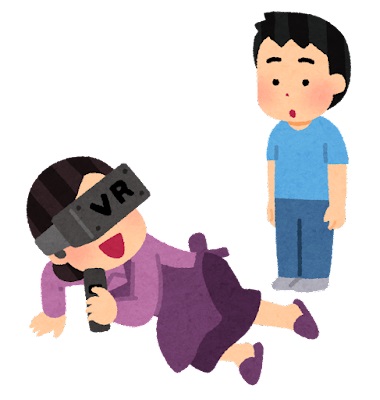Design for Illusions or against Illusions
Posted on November 21, 2021
How would you know the difference between the dream world and the real world? -Neo, The Matrix (1999)
What is Design?
Actually, I do not have any clear answer to that question. Especially for non-native English speakers like me, it is even more difficult to understand the meaning. It is said that the word comes from the Latin word “designare,” which means representing plans by symbols. Considering the history, design (especially industrial design) is the ingenuity to create beauty in appearance and functionality within the constraints of shapes that are easy to produce with machines. Nowadays, the object of design has expanded to include formless things, such as service and user experience. While the definition of design has been changing little by little in accordance with the remarkable development of technology in recent years, design is basically the act of embodying thoughts.
How Might We Design an Ultimate Prison?
The first design tool today’s design students learn is “How Might We,” but the answer to the question “How might we manage a large number of prisoners with a small number of prison guards” was considered in philosophy. Michel Foucault introduces Bentham’s idea of a prison called the Panopticon in his book [1]. The amazing thing about the Panopticon is that the watchtower of the Panopticon does not need to have an actual guard, because the prisoners do not know whether there is a guard in the tower or not, so prisoners have the illusion in their minds that they are being watched all the time.
In fact, this system is also used in schools and companies today. Through surveillance, punishment, and tests, people are programmed to become what society assumes they should be. This may be the most effective method of domination that has been created in the history of self-domestication. People are under the illusion that they are always being “watched” by their superiors. The illusion of being watched in people’s minds can be embedded through a prison or a social system. Even if the thoughts are illusions, design can implant thoughts in an other through artifacts or systems.
Everything is an Illusion?
It may be relatively easy to realize that “being watched” is an illusion. But is it possible to tell how much of our world is real and how much is an illusion? Humanity continues question the existence of the real world. The boundary between dreams and reality has also been questioned in philosophy such as the five-minutes hypothesis, brain in a vat and Zhuangzi’s butterfly dream, and in movies such as The Matrix and Inception.
Descartes said, I think, therefore I am. This is because, as a result of doubting everything in the world, you cannot doubt the existence of yourself who are doubting it. Yet, all living things, including human beings, are “designed” to see illusions by natural selection. As Jakob Johann Baron von Uexküll put it, all living things are trapped in Umbelt. Buddhism shows that the ego is an illusion. The consciousness you regard as yourself may be nothing more than an emergence generated by the electrical signals of your neurons.
Humans seeing illusions continue to create more illusions. Yuval Noah Harari says that fiction has evolved Homo sapiens in his book “Sapiens: A Brief History of Humankind” [2]. Money, capitalism, companies, and countries are all collective illusions that exist only in people’s minds. Moreover, contemporary people are about to create a new illusion called metaverse. The initial illusion of “I” and “you” leads to the illusion of “we” and “they,” which led to the common illusion of nation, the desire for territorial expansion, the expansion of colonies, the two world wars, and confrontational structure between the West and the East in the Cold War. All of these boundaries are fictions and illusions.
Destination of Design
Therefore, ideas and thoughts that designers try to embody may also be based on illusions. If everything is an illusion created by humans, then what is the meaning of design? Design embodying illusions generates vicious circles of planting new illusions in another person. Is it right that the destination of design we end up with is generating illusions like the Panopticon? Definitely not.
I believe the role of design is to help us escape from these illusions. For example, while the real historical buildings and the presidents are depicted on US dollar bills, imaginary buildings are depicted on Euro banknotes. The design of banknotes can incite patriotism or promote friendship. Design has a history of breaking away from Western and traditional ways of thinking, which movement is called modernism. Design should not be used only to succeed in business and make money in the capitalism, and to pass on the remnants of the colonial era to future generations. Transition design and speculative design, which are proposed as new designs, are attempts to design another future world that is different from the current one, and they visualize the illusions that we are trapped in. These approaches could be a renaissance of design-ness. “We need to move beyond speculative design, to speculative everything” as Anthony Dunne and Fiona Raby say [3]. Design will never lose its spirituality of breaking away from the illusions of its time.
How might we face our illusions? There are many alternatives. You can design for illusions, or against illusions. I hope that design lets everyone realize that every border is an illusion and break them like the Berlin Walls. Astronaut Mamoru Mori said, “I could not see the border line from outer space.”

References:
[1] Foucault, Michel, 1926-1984. Discipline and Punish: the Birth of the Prison. New York: Pantheon Books, 1977.
[2] Harari, Yuval N. author. Sapiens: a Brief History of Humankind. New York: Harper, 2015.
[3] Dunne, Anthony and Fiona. Raby, Speculative Everything: Design, Fiction, and Social Dreaming. Cambridge, Massachusetts: The MIT Press, 2013.
By X